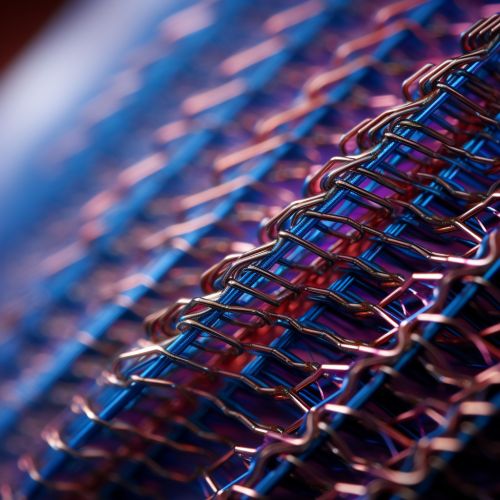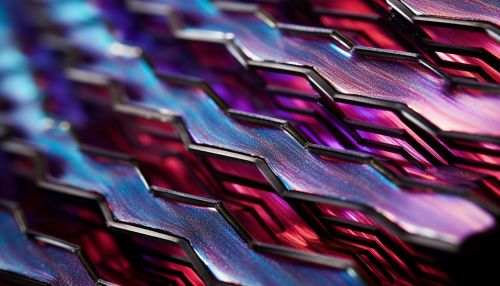Thermoelectric Materials
Introduction
Thermoelectric materials are a class of materials that can convert heat directly into electricity. These materials exhibit the thermoelectric effect, a phenomenon that encompasses two closely related effects: the Seebeck effect and the Peltier effect. The Seebeck effect describes the conversion of a temperature difference into an electric voltage, while the Peltier effect describes the reverse process, the conversion of an electric voltage into a temperature difference.


Thermoelectric Effect
The thermoelectric effect is the direct conversion of temperature differences to electric voltage and vice versa. This effect can be used for various applications, such as power generation, refrigeration, and temperature sensing. The efficiency of the thermoelectric effect in a material is quantified by its thermoelectric figure of merit (ZT), a dimensionless quantity that is a function of the material's Seebeck coefficient, electrical conductivity, and thermal conductivity.
Types of Thermoelectric Materials
There are several types of thermoelectric materials, each with unique properties and applications. These include semiconductors, metals, organic materials, and complex compounds.
Semiconductors
Semiconductors are the most commonly used thermoelectric materials. They have a high Seebeck coefficient and low thermal conductivity, making them ideal for thermoelectric applications. Examples of semiconductors used as thermoelectric materials include bismuth telluride, lead telluride, and silicon germanium.
Metals
While metals generally have lower thermoelectric efficiency than semiconductors, they are still used in certain applications due to their high electrical conductivity and durability. Examples of metals used as thermoelectric materials include copper, aluminum, and iron.
Organic Materials
Organic materials, such as polymers and organic compounds, are a relatively new class of thermoelectric materials. They offer the advantages of low cost, flexibility, and low thermal conductivity. However, their thermoelectric efficiency is generally lower than that of semiconductors and metals.
Complex Compounds
Complex compounds, such as skutterudites and clathrates, are also used as thermoelectric materials. These compounds have complex crystal structures that can be tailored to optimize their thermoelectric properties.
Applications of Thermoelectric Materials
Thermoelectric materials have a wide range of applications, from power generation to cooling and heating systems. They are used in thermoelectric generators, thermoelectric coolers, and thermoelectric sensors.
Thermoelectric Generators
Thermoelectric generators (TEGs) use the Seebeck effect to convert heat into electricity. They are used in a variety of applications, from waste heat recovery in industrial processes to power generation in space probes.
Thermoelectric Coolers
Thermoelectric coolers (TECs), also known as Peltier coolers, use the Peltier effect to create a temperature difference across a junction. They are used in applications such as cooling electronic components and refrigerating small items.
Thermoelectric Sensors
Thermoelectric sensors use the Seebeck effect to measure temperature. They are used in a wide range of applications, from industrial temperature control to medical diagnostics.
Future Directions
Research in thermoelectric materials is focused on improving their thermoelectric efficiency and finding new materials with superior properties. This includes the development of nanostructured materials, which have shown promise in achieving high ZT values, and the exploration of new classes of materials, such as topological insulators and two-dimensional materials.
See Also
- Thermoelectric cooling
- Thermoelectric power generation
- Thermoelectric sensing
- Thermoelectric materials research
